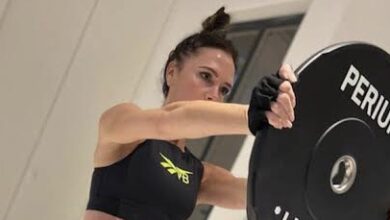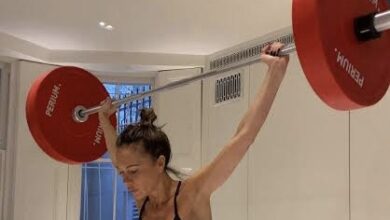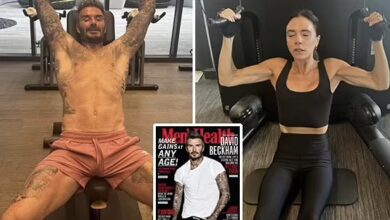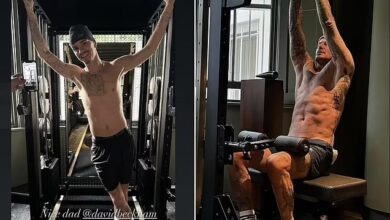‘As Victoria Beckham turns 50, I trained with her PT and here’s what he taught me’
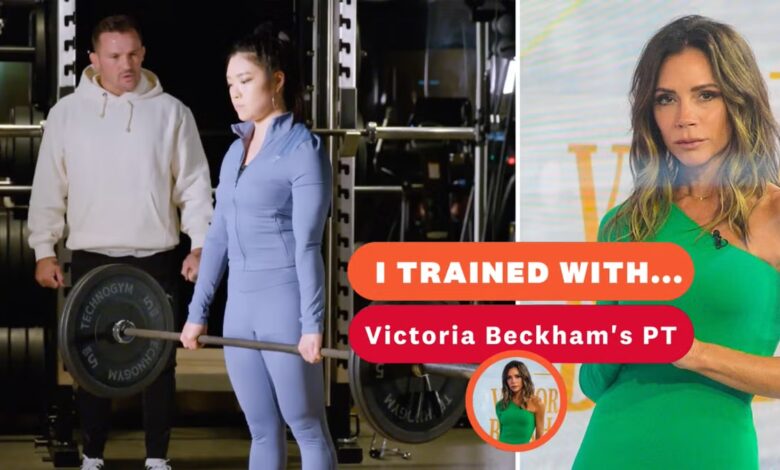
Former Spice Girl, fashion designer and bona-fide cool gal, Victoria Beckham, turns 50 today, and it seems like she’s just getting started, not least when it comes to her fitness.
Last year, she unveiled that she was in her ‘strength-training phase’, after reportedly favouring cardio – she even dropped on social that she’d mastered the impressive feat of an overhead barbell squat. Damn.
She’s been working out with husband David’s PT, Bobby Rich, and so I caught up with him at The Londoner hotel’s swish and swanky gym in its wellness sanctuary, The Retreat, to find out some of his programming protocol. Here are eight things he taught me, plus a full breakdown of the workout he programmed for me.
1. We should be able to perform five fundamental movements
Bobby believes there are five foundational movements we should be proficient in:
press off the floor (e.g. squat)
pulling off the floor (e.g. deadlift)
pressing weight away from you (e.g. chest or bench press)
pulling weight towards you (e.g. single-arm row, pull-up)
rotation
‘For individual performance in day-to-day life, [even before considering training] in sport, we need to be strong in these foundations,’ Bobby says.
‘People sometimes turn their noses up when they hear “fundamental” or “foundation”, because they think it’s “beginner chat”,’ he continues, ‘but we can’t do any of those “impressive” movements that you might see without making sure our basics are solid.’
2. Victoria makes workouts a ‘non-negotiable’ but she rests up, too
Exercising from Monday to Friday is a must for Victoria, who trains ‘significantly hard’, notes Bobby, but she’ll make sure to take Saturday and Sunday off as that’s what works for her schedule and makes it sustainable.
His other top tips? ‘Sleep – I constantly check in on sleep. I want to know that my clients feel rested,’ says Bobby.
3. Victoria integrated strength training gradually
VB’s interested in strength training started when Bobby began to train husband David and Victoria became interested in some of the movements they were practising. ‘The integration came through introducing Victoria to new movements that she was curious to try and answering questions,’ says Bobby.
First, Bobby helped her to focus on ‘form’, and showed her exercises using lighter loads. Then, over time, they used progressive overload – ‘a slight incremental increase in training stress on top of another, session after session, week after week, so you continue to improve,’ according to Andy Vincent, a strength and conditioning coach – increasing the training stimulus through volume and intensity, to build up her fitness.
VB used to do a lot of cardio, but Bobby confirms that, in recent years, ‘there’s been a big shift to focus on and strength and resistance’.
4. The focus of Victoria’s training session varies over the stages of a training cycle
Victoria’s training is periodised into specific blocks with different foci to meet her strength-training goals. ‘Weight training takes a while to reap the rewards and the benefits’, Bobby also adds, so these blocks are long enough to deliver results if followed consistently.
One cycle might be centred around hypertrophy (increase in muscle size or strength through resistance training); another strength; another might be power and endurance, elucidates Bobby. All blocks last roughly around six to 10 weeks, adjusting for clients’ responses to training and schedules.
